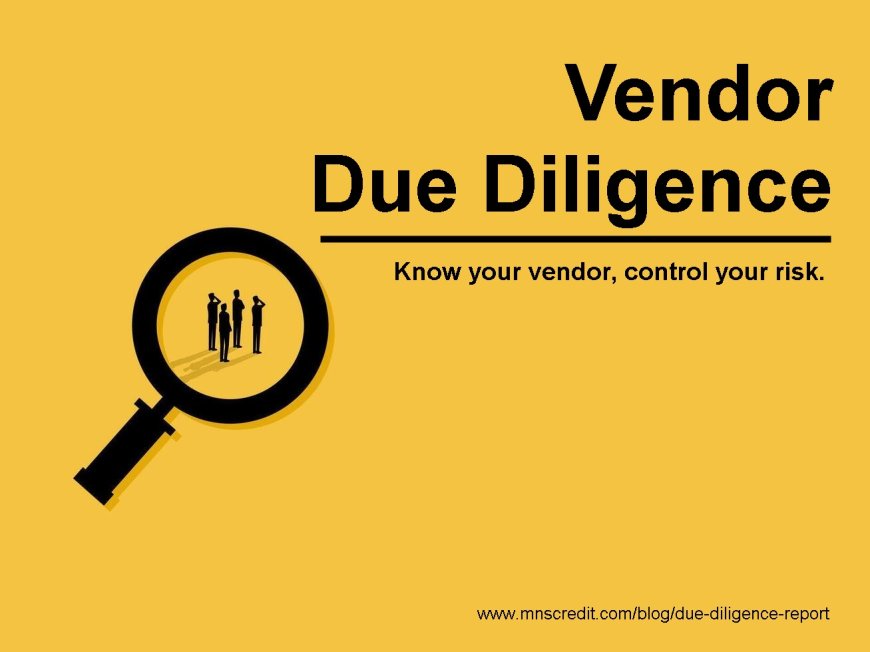Beyond the Basics: Crafting a Robust Due Diligence Report in Five Strategic Steps

Introduction
In todays complex business landscape, partnerships with third-party vendors are essential for operational efficiency. But while vendors can drive innovation and cost savings, they also introduce hidden riskscybersecurity breaches, financial instability, or reputational damage. Thats why a meticulously structured due diligence report is indispensable. It not only safeguards your organization but also ensures compliance, builds trust, and streamlines procurement.
Drawing inspiration from Bitsights "Five?Step Vendor Due Diligence Checklist", this article explores each critical phase in the process of creating a high-impact due diligence report.
1. Capture Basic Company Information
Your due diligence report must begin with verified, foundational data. This includes:
-
Corporate documents like articles of incorporation, business licenses, and organogram charts.
-
Key personnel profilesinformation on executives, board members, and decision-makers.
-
Geographic footprint, including country of origin and physical addresses, verified with documentation or on-site photo evidence.
-
Industry references and testimonials that offer insights into the vendors reliability.
This baseline data provides the identity verification and contextual clarity necessary before progressing. It enables a level of scrutiny essential when sensitive data or access to systems is involved.
2. Evaluate Financial Health and Stability
A vendors fiscal strength can make or break your partnership. Your due diligence report should include:
-
Recent tax filings, audited balance sheets, profit-and-loss statements.
-
Debt profile, financing arrangements, and capital reserves.
-
Fixed and intangible assets, including intellectual property.
-
Compensation structures and cost models.
This analysis ensures vendors will be financially viable throughout the partnership. It also helps anticipate cost escalations tied to growth or inflation. Bitsight emphasizes that evaluating financial viability is as important as policing cybersecurity risks.
3. Screen for Political and Reputational Risk
Assessing reputation-related factors prevents unforeseen liabilities. Your due diligence report should cover:
-
Watchlists and sanctions screening vendors and key individuals against global sanction lists.
-
Lawsuits/regulatory cases past or pending legal challenges.
-
Politically Exposed Persons (PEP) affiliations that might trigger heightened scrutiny.
-
Regulatory actions, such as fines from agencies like CFPB or local authorities.
-
Media and social sentiment negative news coverage or public complaints.
This comprehensive vetting protects your brand and aligns partnerships with your corporate compliance standards.
4. Assess Cybersecurity Posture
In an age where one third-party breach can compromise entire networks, cybersecurity evaluation is critical. Your due diligence report should present:
-
Tiered cyber?risk questionnaires, customized to the vendors role and access level.
-
Objective security ratings (e.g., Bitsight) to benchmark posture.
-
Digital attack surface analysis, identifying vulnerabilities in internet-facing assets.
-
Certifications and compliance frameworks (e.g., NIST, SOC 2, GDPR, DORA, NIS2).
-
Incident response readiness and historical incident behaviour.
-
On-site audit findings, particularly for high-risk categories.
Bitsights data shows that 62% of intrusions originate via third parties and 72% cause major disruptionsmaking this step pivotal.
5. Examine Operational Risk and Resilience
Operational risks can be as disruptive as financial or cyber failures. Include these elements:
-
Business continuity and disaster recovery plans, with SLA commitments.
-
Cyber-insurance coverage and policy limits.
-
Human resources controls, such as hiring protocols, background checks, and training frequencycrucial given human error is a major breach vector.
-
Third-party subcontractor policies, along with escalation and notification mechanisms.
-
Change management systemshow the vendor manages updates or service outages.
This multi-dimensional review ensures your vendor isnt just secure, but also reliable and transparent under stress.
6. Constructing the Report: Structure & Methodology
A well-crafted due diligence report flows logically and provides actionable clarity:
-
Executive summary key risk findings, vendor tier, and recommended decision.
-
Scope & methodology detail your tiering approach, data sources, questionnaires, tools, and review stages.
-
Detailed risk categories structured sections: corporate, financial, reputational, cyber, and operational.
-
Risk scoring use a consistent rating scale (e.g., red/yellow/green or quantitative scores).
-
Action plan clearly articulate remediation steps, SLAs, and contract clauses.
-
Continuous monitoring strategy outline cadence for reassessment, security rating renewal, and ongoing alerts.
This architecture aligns with industry best practices and provides decision-makers with a clear, defensible narrative.
7. Beyond Onboarding: Continuous Monitoring & Automation
Due diligence doesnt end with onboarding. A living due diligence report evolves through:
-
Automated monitoring tools, with real-time alerts on posture changes.
-
Regular re-evaluations, especially following security incidents or regulatory updates.
-
Dynamic risk thresholds, where vendors are reevaluated if they dip below set standards.
-
Contractual triggers that mandate review or remediation in case of specific events.
Automationespecially for questionnaire analysis and security ratingsempowers teams to scale without additional headcount while maintaining rigor.
8. Best Practices & Lessons Learned
-
Tier by risk and impact: allocate resources proportionatelyfocus more on critical or high-exposure vendors.
-
Use objective metrics: blend questionnaire responses with unbiased security data.
-
Maintain transparency: vendors should understand how theyre evaluated and be guided on improvement paths.
-
Foster interdepartmental alignment: cybersecurity, legal, compliance, procurement, and finance should share common evaluation standards.
-
Stay agile: regularly update criteria to reflect evolving threats (e.g., supply chain malware, AI-driven attacks).
Conclusion
A compelling due diligence report is more than a compliance documentits a strategic asset for third-party risk management. By rigorously evaluating vendors across corporate, financial, reputational, cyber, and operational dimensions, you're creating a proactive shield against future disruptions.
Following the five-step framework inspired by Bitsight ensures you gather the right data, analyse objectively, and maintain vigilance through the vendor lifecycle. When packaged in a structured, score-driven report, it enables confident, informed decision-makingand empowers continuous partnership quality.
Invest in thoughtful diligence today to secure your ecosystem for tomorrow.


































